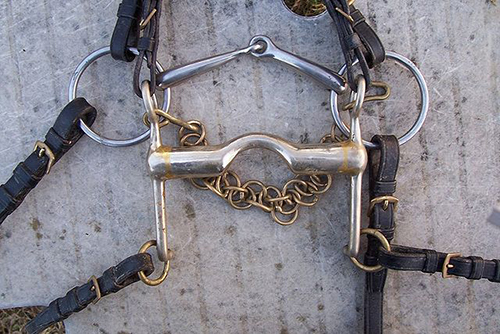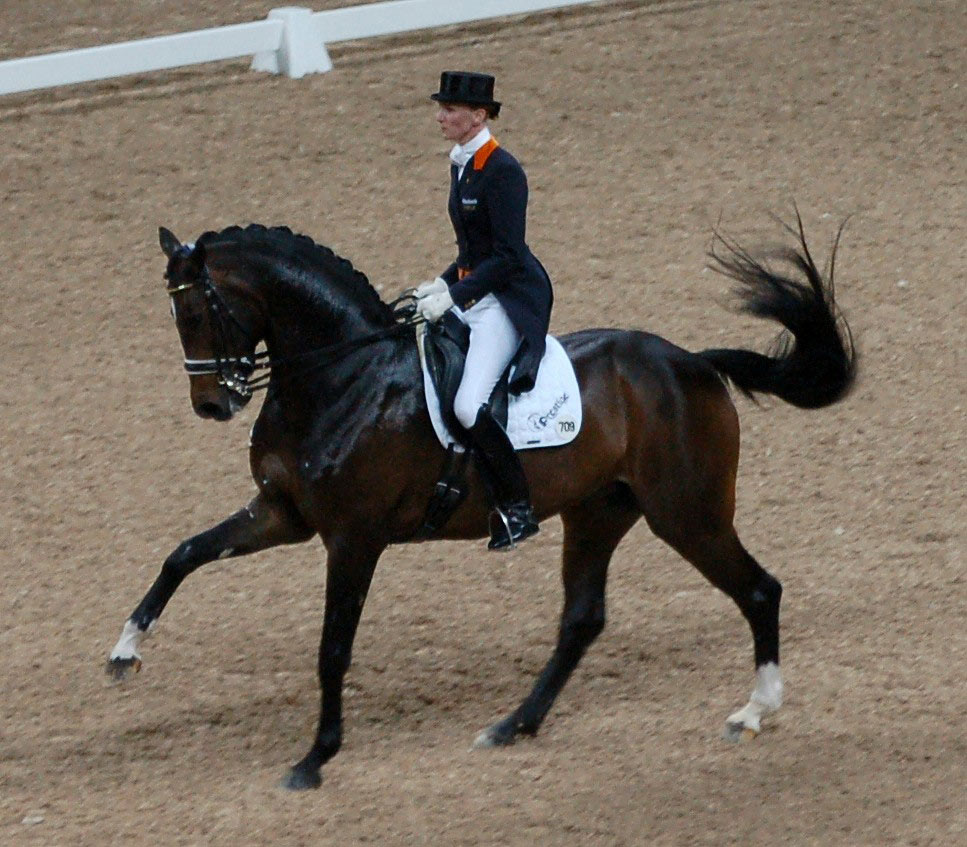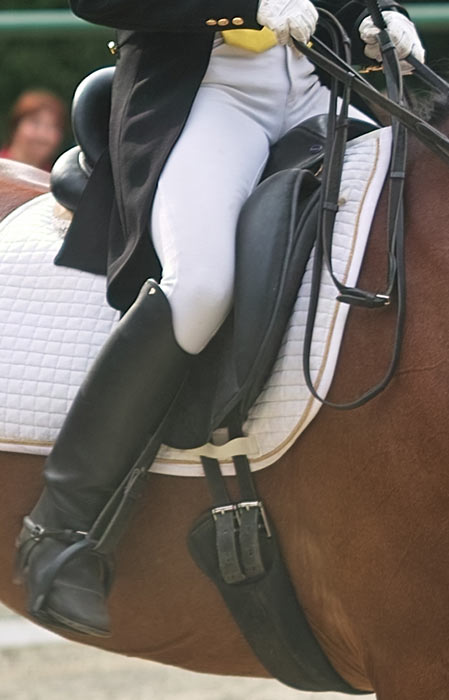Dressage
Bits used in a double bride

'A curb bit and a bradoon (double bridle)' by Alex brollo from Wikimedia CC BY-SA 4.0.
A double bridle, also a Weymouth bridle, is a bridle that has two bits and four reins (sometimes called "double reins"). One bit is the bradoon (or bridoon), is a modified snaffle bit that is smaller in diameter and has smaller bit rings than a traditional snaffle, and it is adjusted so that it sits above and behind the other bit, a curb bit. Another term for this combination of curb and snaffle bit is a "bit and bradoon," where the word "bit" in this particular context refers to the curb.
They are required for upper level FEI dressage tests (Prix St. Georges (PSG), Intermediare, and Grand Prix), and are optional in other tests – check the rules. They are also permitted in the dressage phase of eventing at the Intermediate or Advanced levels, although not required. (In eventing, even at the advanced level, snaffle bridles are still the norm.)
Taken from Wikipedia
×Saddle and girth
Dressage saddle, showing deep seat, longer straight cut saddle flaps and long girth straps, used with a ‘Lonsdale Girth’ which allows closer contact between the rider and the horse through the saddle flaps. A white saddle cloth is generally used.

All efforts have been made to ensure materials created by the EDU comply with current accessibility guidelines (JISC: Support for learners with disabilities).
If further assistance is required with accessibility matters please contact the student support section in your academic partner UHI: Accessing learner support.
We welcome any comments on how to improve this unit. Please feel free to pass these on at any time.
If you have any difficulty viewing this resource please contact EDU (edu@uhi.ac.uk) with:
- the name of the resource;
- a description of the problem (please give as much detail as possible);
- the section of the resource where the problem occurred;
- your internet browser (you can check your browser version at: http://detectmybrowser.com/).
UHI provides links to external sources of information and may refer to specific Web sites, products, processes or services within this resource. Such references are examples and are not endorsements and whilst every effort is taken to ensure the accuracy of information provided UHI is not responsible for any of the content or guidance. You are advised to exercise caution.
Audio
Video
Reading
Download
Information
External link
Activity
Question
Asterisk
Discussion
Collaboration
Reflection/journal/log
History
Download a copy of this resource in PDF format.
You can also print individual pages by printing directly from the browser.

